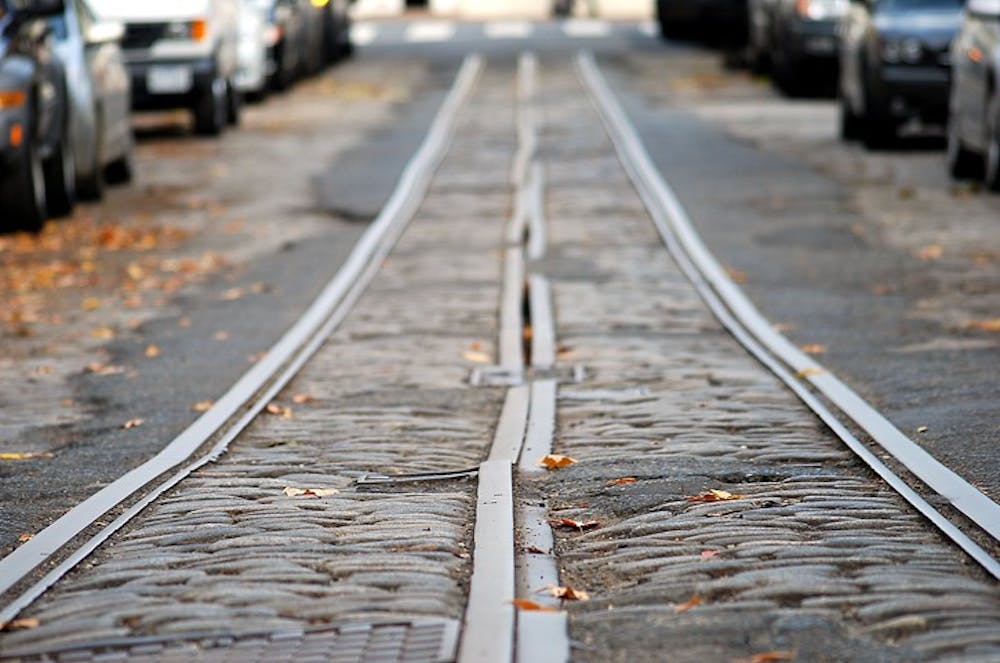The District Department of Transportation recently unveiled plans for a new streetcar transportation system that would connect neighborhoods underserved by Metro, including Anacostia, Georgetown and Adams Morgan.
Streetcar tracks are being constructed in Anacostia and on H Street and Benning Road in Northeast D.C., according to the DDOT Web site. The DDOT hopes to have both lines running by 2012 and expects to build a network with 37 miles of streetcar tracks
It has been almost 50 years since streetcars last operated in the District, according to the DDOT Web site.
Though buses could easily get people around new routes, the streetcars offer distinct advantages, according to DDOT spokesperson John Lisle.
“Streetcars provide economic development in communities,” Lisle said. “Unlike bus routes, which serve already-developed areas, streetcar tracks indicate a city’s investment in a developing area and better housing options along the corridors.”
For some D.C. bloggers, the network is a positive direction in improving some neighborhoods.
“There is research from around the world that shows streetcars being big catalysts for development,” said David Alpert, creator of the Greater Greater Washington-area blog. “While Metro is focused on getting people into and out of the core of downtown, streetcar is moving people throughout the city into emerging commercial and retail quarters. This is especially important for the proposed line running along the waterfront in Anacostia.”
The streetcar lines would offer a broader range of transit options for residents.
“For the people using cars, they can see it as an easier way to get around,” Lisle said. “The system is easier to understand than bus routes. There is a fixed route and clear system map. This will encourage people to use public transit more and leave their cars at home.”
Lisle also said that streetcars would serve as solutions to some other problems with the current Metro system, which include some Metrobus lines operating over 100 percent capacity and congestion on the Metrorail.
“We are predicting a 32 percent increase in the number of transportation riders by 2030,” said Cathy Asato, information specialist at WMATA. “This is the size of what we had during the Obama Inauguration.”
Other proposed branches of the streetcar line, such as the K Street corridor, are in dire need of reduced congestion, according to the DDOT Web site.
“Many bus lines compete with traffic in these dense areas,” Lisle said. “This could be made easier by placing streetcar tracks down the center of the road while cars may pass on either side.”
The new project does not come without some questions from the community, including bloggers like Alpert. Funding has been an issue for the city even in the best of times, he said.
“There have been some budgeting problems within Metro services,” Alpert said. “The cost of the streetcar network is definitely the biggest downside.”
But funding is not necessarily the issue, according to the DDOT. The department will not have to secure funding for the entire network for seven years.
“Yeah, funding is something that needs to be worked out and there are some budget problems,” Lisle said. “Yet, capital investment is several years in the future and the economy is likely to be recovered by then. We are expecting the District to bring in more tax revenue to help out.”
Several AU students said they thought streetcars were a good idea.
“It would help neighborhoods previously inaccessible to students in the Northwest [become] accessible,” said Marc Tomik, a graduate student in the School of Public Affairs. “For me, it makes a journey to Columbia Heights a lot easier. I wouldn’t have to transfer lines downtown.”
Carla Trippe, a graduate student in the School of International Service, said streetcars are the main form of transportation in her hometown of Düsseldorf, Germany.
“It’s an easy and efficient way to get around,” she said. “I just think it will be difficult for the average D.C. driver to adjust. It wouldn’t take too long for people to notice the benefits though.”
Some students, however, do not think streetcars are necessary.
Shane Carley, a junior in SPA, said WMATA should focus on fixing its exis ting systems before starting new, unnecessary ones.
“Also, streets in D.C. are some of the narrowest streets,” he said. “I don’t see streetcars being that much better than buses.”
According to the DDOT Web site, the new streetcars are not as wide as the eight-foot wide Metro buses.
The exact timeline for the system is dependent on funding from the federal government, the D.C. council and private investments.
You can reach this writer at news@theeagleonline.com.





